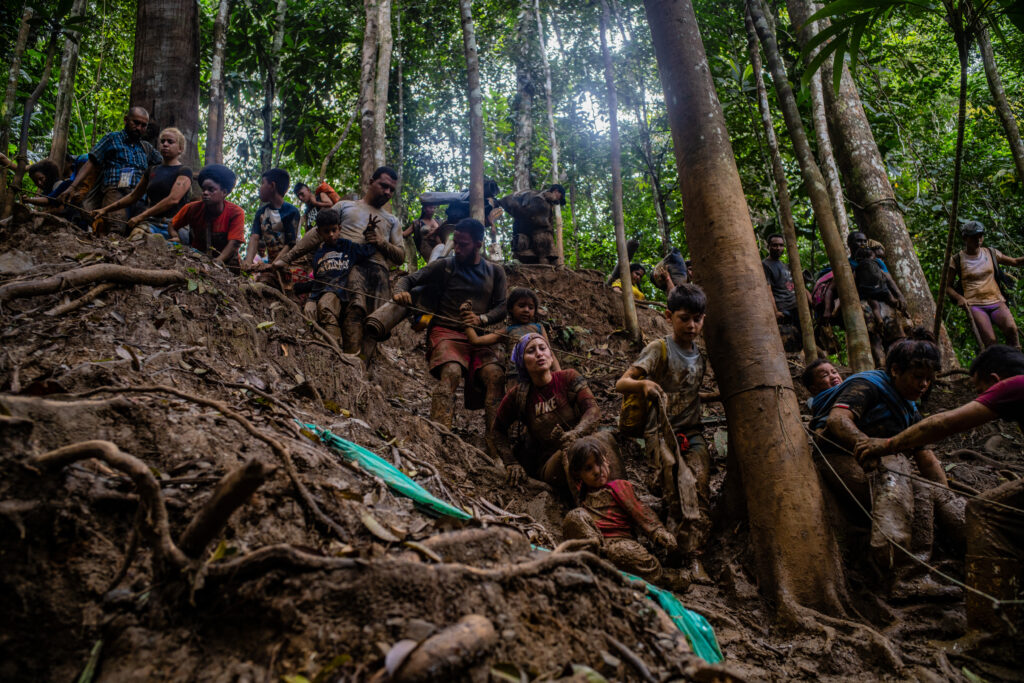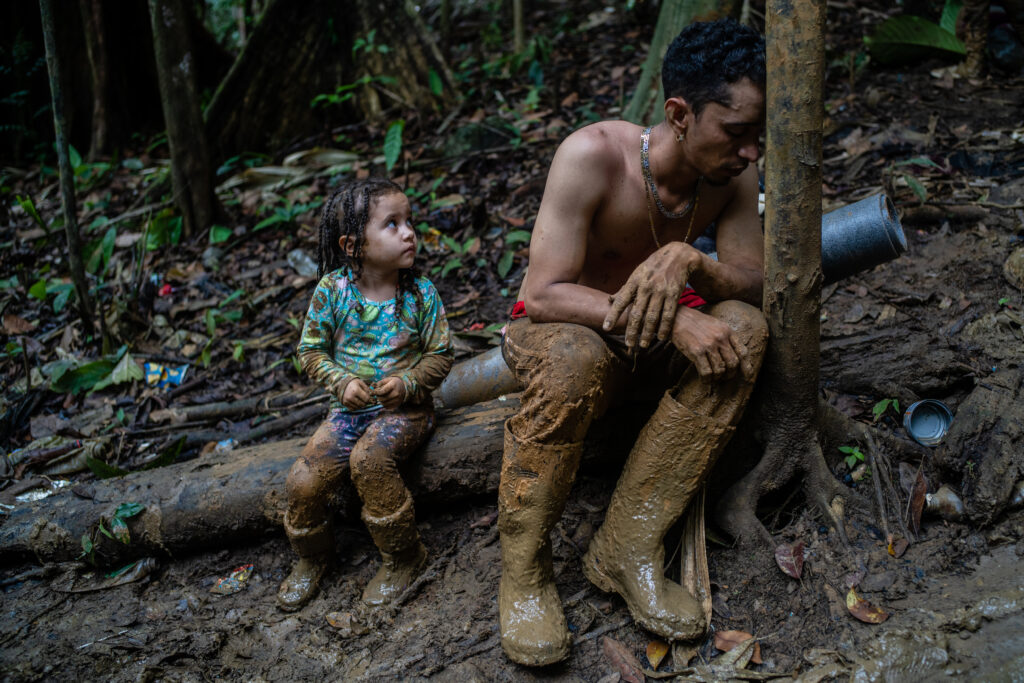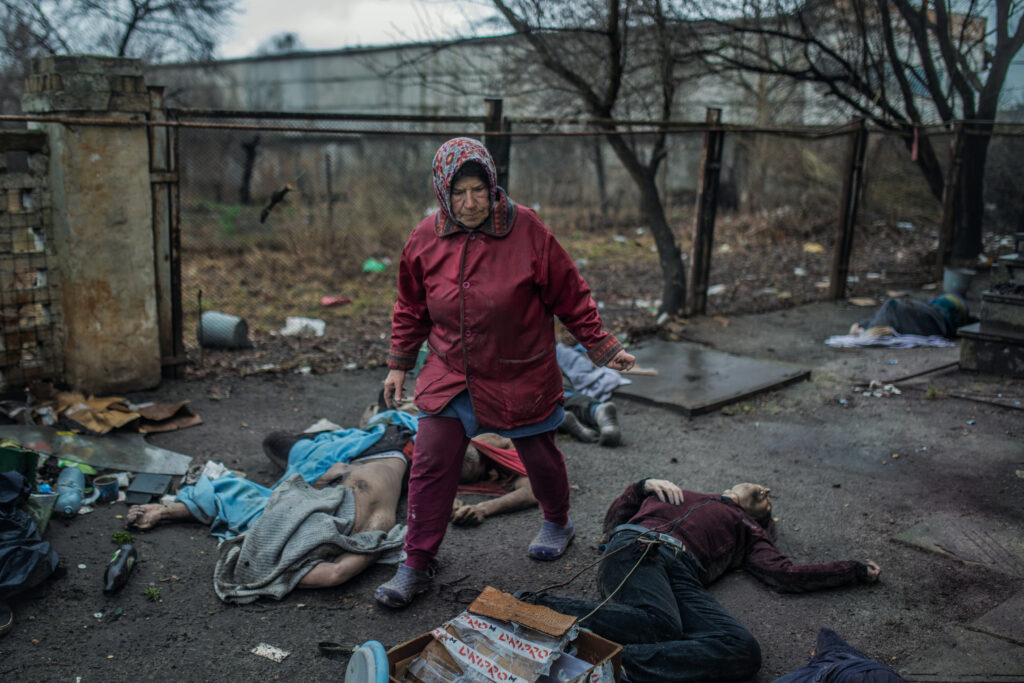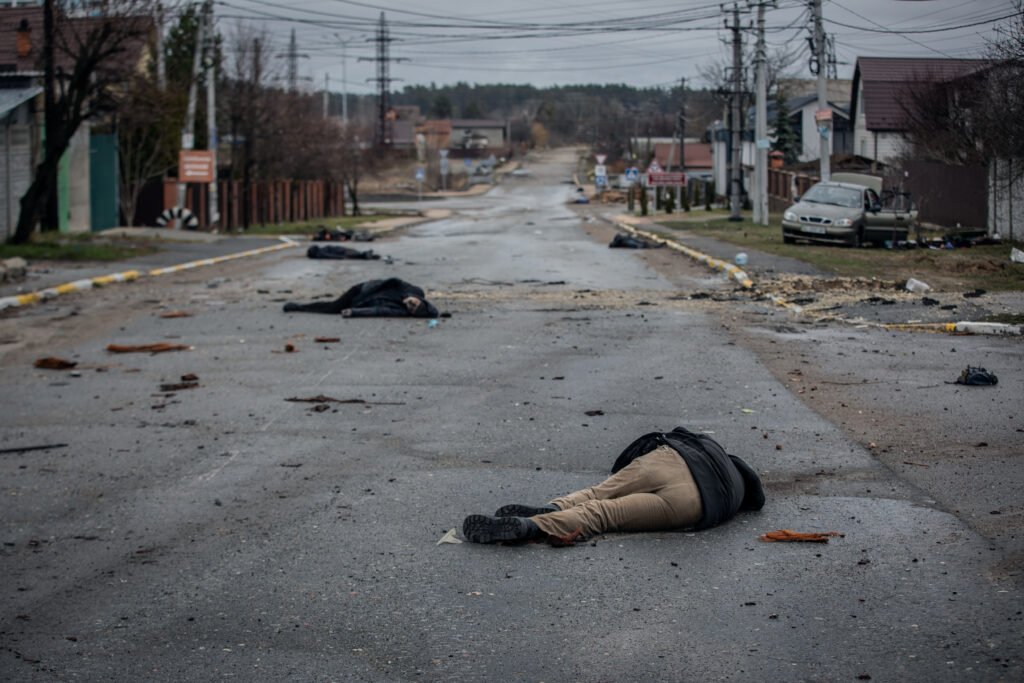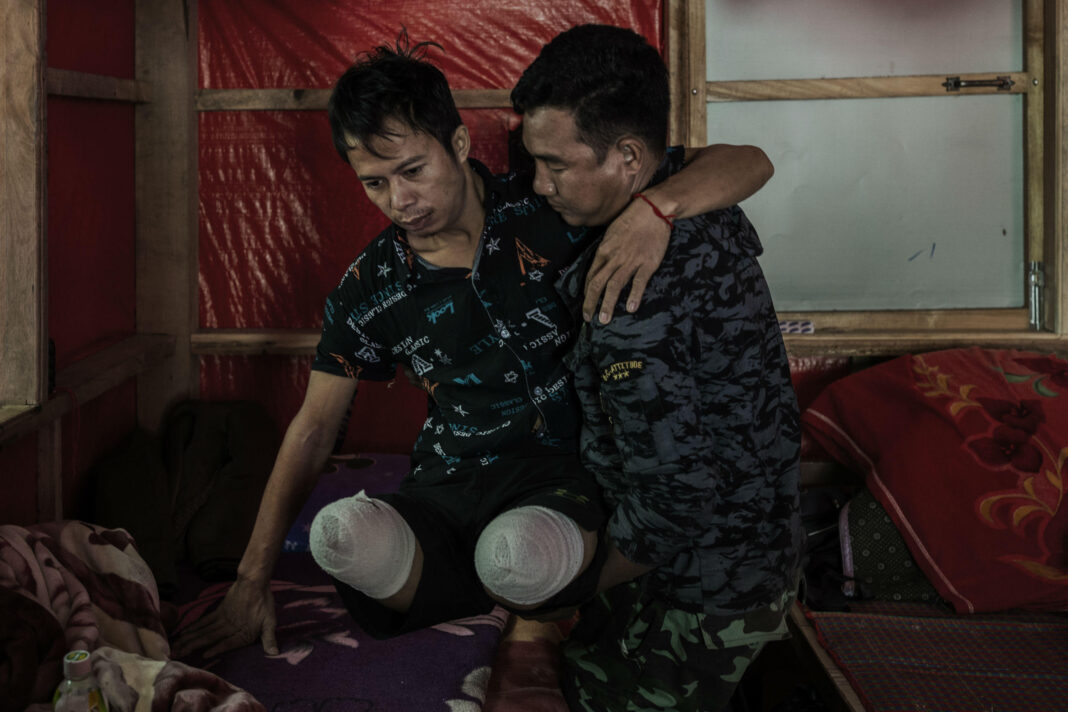Siegfried Modola is the winner of the third edition of WARS, the international photography competition conceived by Fabio Bucciarelli, its artistic director, and Raffaele Crocco, editor-in-chief of the Atlas of Wars and World Conflicts. The Italian-British photojournalist and documentary photographer won the first WARS prize and also the “Visa pour l’image”, awarded yesterday in Perpignan, with work from Myanmar, which has been plunged back into civil war since its armed forces overthrew the civilian government in February 2021.
“Journalists,” he says, “have been banned from working in Myanmar since the country plunged into civil war when its armed forces overthrew the democratically elected government in February 2021. I have been secretly covering the conflict since January 2022, spending more than four months embedded with units of Karenni soldiers fighting the military regime. Keeping the story on the editors’ agenda was a challenge. I started covering Myanmar when Russia invaded Ukraine. I had to face the daunting reality that an already tight newsroom had become even more unattainable as Ukraine dominated the headlines.”
The distinguished WARS jury, formed by Maral Deghati, Philip Blenkinsop and Rodrigo Abd, then selected two finalists. The first is Federico Rios, also a winner of yesterday’s Visa pour l’image, with a photoreportage from the Darien Gap, which has become one of the world’s most important migratory routes, with thousands of people from dozens of countries crossing the stretch of jungle between Colombia and Panama, heading north to reach the United States. The second finalist is Santi Palacios with his work from the town of Bucha, north-west of Kyiv, which will go down in history as one of the most significant moments of atrocities committed during the Russian invasion of Ukraine.
The award ceremony will take place today in Mantua, during the Literary Festival: in this third edition of the Montura Prize, photographers from all over the world participated with photo stories that tell of the wars and conflicts of the planet. Not only in terms of fighting, but also in search of their causes, their reasons. The exhibition of the works of the three finalists will be held at the War Museum in Rovereto from 15 September to 22 October.
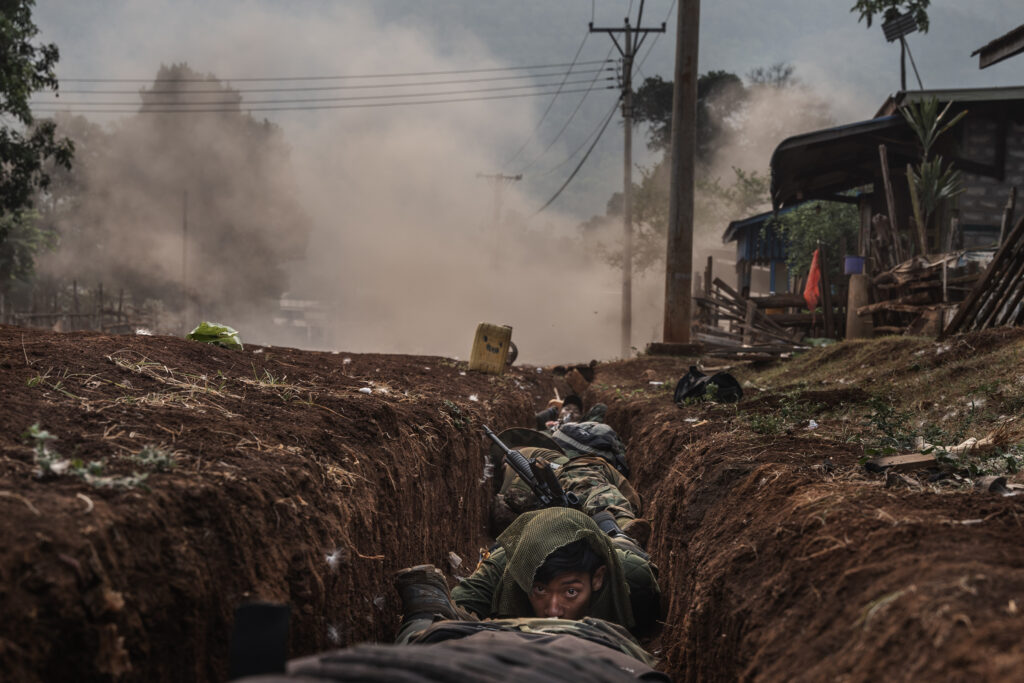
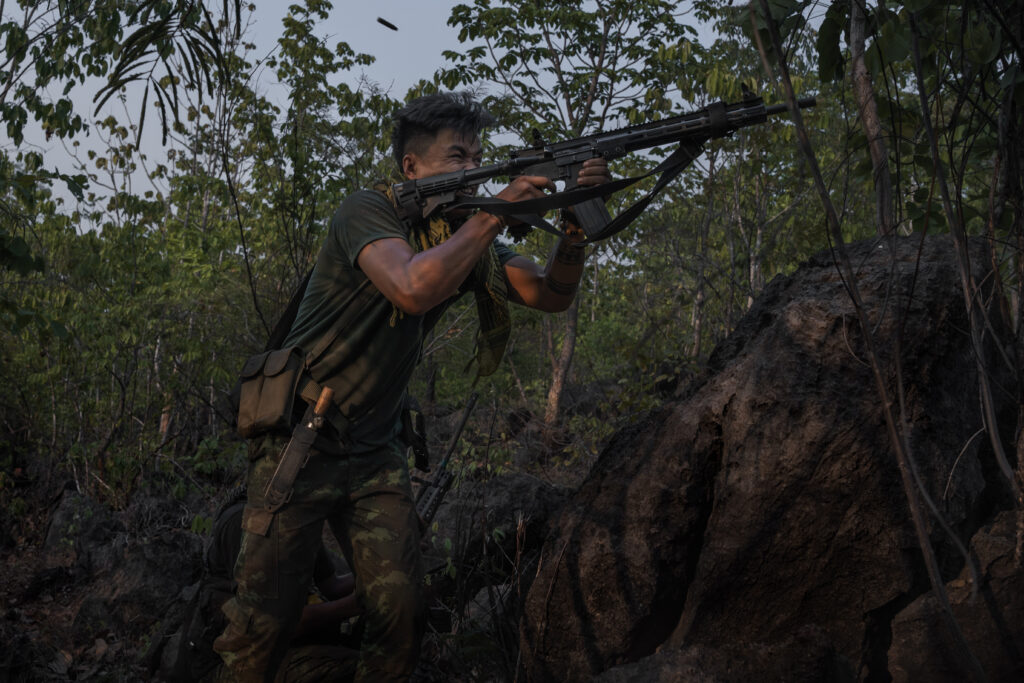
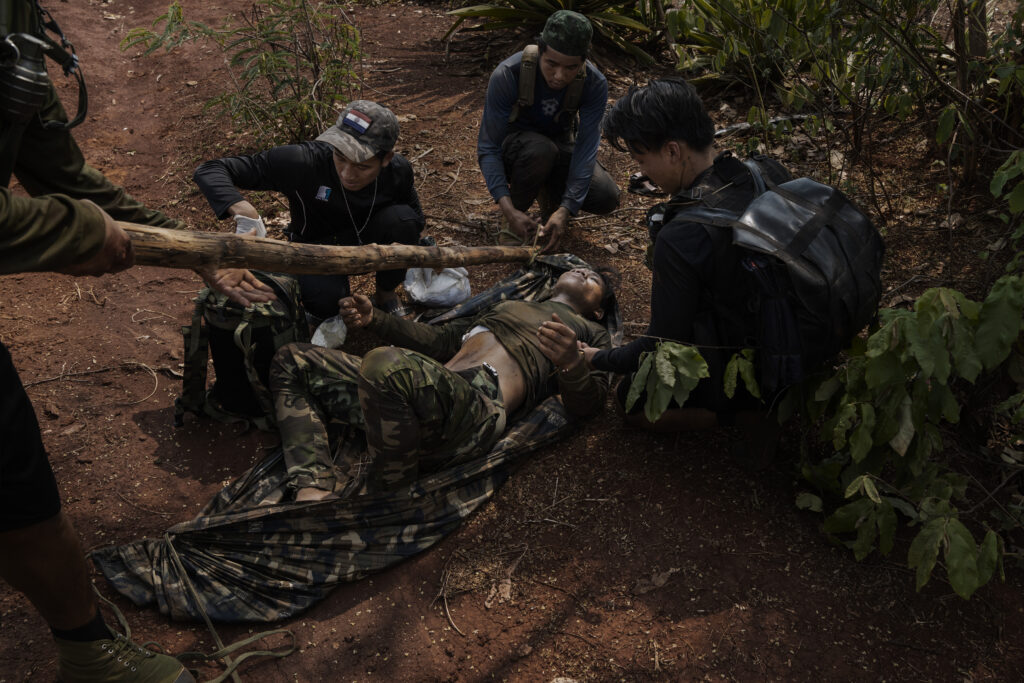
Sigfried Modola, a Karenni soldier fires his weapon during fierce fighting with Myanmar army units in Kayah (Karenni) State, eastern Myanmar (Burma) on 17 April 2023. This is where some of the fiercest fighting is taking place, as long-standing grievances over ethnic identity, autonomy and political representation have escalated into intense guerrilla warfare against the military.
Sigfried Modola, men assist a seriously wounded Karenni soldier during clashes with the Myanmar army in Kayah State (Karenni) in eastern Myanmar (Burma) on 22 April 2023. The soldier was shot during a close-quarters firefight with the military junta in a wooded area. The bullet pierced his liver, but he survived after being treated by paramedics and then taken to a Karenni military field hospital.
Fabio Bucciarelli, Artistic Director of WARS
“In a globalised world where news travels at an astonishing speed, we often find ourselves caught between truth and falsehood. Technological advances and the widespread use of social media as a primary source of information present us with a crucial challenge: to accurately distinguish between real and false information, between truth and disinformation. In this context, the role of photojournalists is crucial. They physically immerse themselves in reality, travelling long distances to remote and often forgotten areas. The WARS Award honours these professionals who, driven by a passion for a fairer world, put their lives at risk in the service of information, using photography as a democratic tool to depict often uncomfortable realities”.
The third edition of WARS saw a significant increase in both the quantity and quality of projects, with over 3,000 photographs from 47 different Countries. As in previous editions, the jury, made up of top professionals in the field – this year including Maral Deghati, Managing Editor of Getty Images, Rodrigo Abd, Pulitzer Prize-winning photographer, and Philip Blenkinsop, author of the agency VII – engaged in intense discussions to select the best in international photojournalism. From three different corners of the world, the three winning photographers, one first prize winner and two runners-up, demonstrated exceptional skill and expertise in the execution of their photojournalism projects. They highlighted several key aspects of the profession: dedication to storytelling and empathy with the subjects photographed; the ability to gain exceptional access in conflict contexts; flair and skill in being in the right place at the right time; and the strength and willingness to undertake challenging and often dangerous journeys.
Siegfried Modola’s project “Inside Myanmar’s Armed Uprising”, which won the first prize, immerses us in an ongoing war between armed Karen rebel groups and the Myanmar government. Only those who have worked in these areas can fully appreciate the time it took to produce the report and the difficulties Siegfried faced in gaining this unique access. Siegfried’s skill then did the rest, capturing never-before-seen images that shed light on a forgotten conflict.
Santi Palacios, a Spanish photojournalist who has been documenting the largest humanitarian crisis in the Mediterranean for years, turned his attention to the Ukrainian conflict in 2022. His work on “The Bucha Massacre” demonstrates not only his ability to be in the right place at the right time, but also his ability to capture human pain in a respectful and moving way.
Finally, the third and final project by Colombian photographer Federico Rios, entitled ‘Paths of Desperate Hope: Crossing the Darien Gap’, documents the courageous journey of thousands of migrants from South America, Afghanistan and the Middle East along one of the most dangerous routes between Colombia and Panama, in a desperate attempt to reach the United States. This work shows the extraordinary determination and strength required to undertake epic feats to document a serious humanitarian crisis that too often escapes the world’s attention.
All the winning photojournalists are freelancers, courageous professionals who dedicate their lives, often at their own expense and risk, to documenting the world’s suffering. Their dedication is a powerful testimony that today no one can ignore the truth”.
